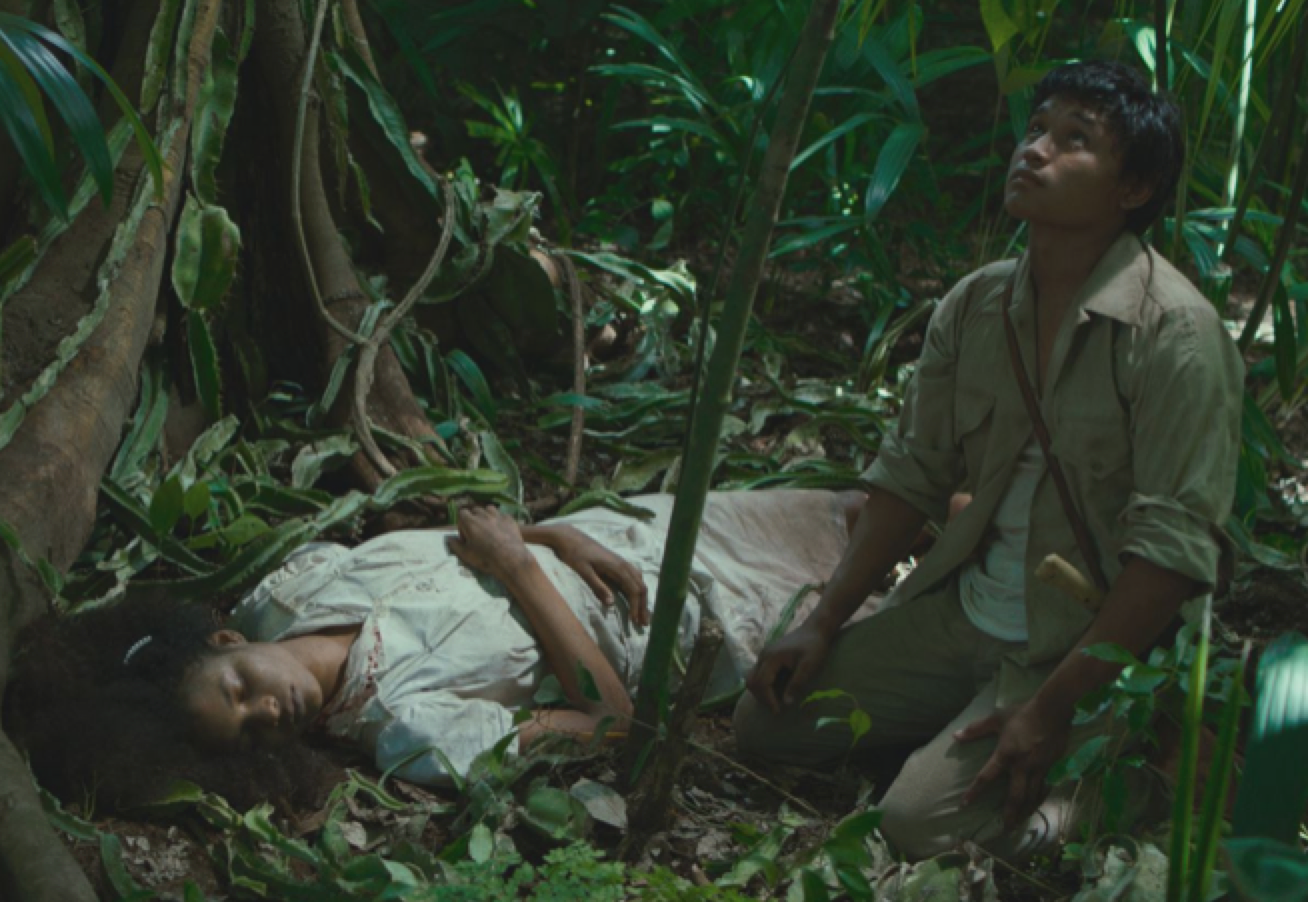THE TRAILER
THE DIRECTOR
Yulene Olaizola
THE ACTORS
Marcelino Cobá Flota, Ian Flowers, Mariano Tun Xool, Mario Canche, Dale Carley, Indira Rubie Andrewin, Cornelius McLaren, Gilberto Barraza
THE STORY
1920, the Mexico-Belize border. While deep in the Mayan Forest, an affluent area abounding in folklore, a group of Mexican gum workers met Agnes, a fascinating young Belizean lady. Their presence creates tension among the people and excites their imaginations and wants. They confront their fate with fresh vigor, unaware of knowing they had awakened Xtabay, a mythical monster lurking in the heart of the forest.

THE RUNDOWN
This whole background is not clearly set forth at first by Tragic Jungle. While Olaizola’s film becomes more aware of the corruptive impact of the free market, at the same time, it examines Xtabay’s Mayan myth. The demon Xtabay leads men into the forest to death throughout the Yucatán Peninsula and Belize. She’s usually in white clothing, and her long hair falls loose and free from thin air she seems to entice and confuse. The morning glory wine which blooms into the white trumpet can show its existence, much as the holy Mayan ceiba tree, which shows the link of the ground to the above and below worlds. If Xtabay, who was believed to be enthralling and killing those who love her, had a slogan, it would be essentially “Men aren’t shit.”

Tragic jungle starts with a transgression and then a breakaway. In a remote woodland area on Mexico’s border, a crew of gum harvesters works the zapote trees. They tie their feet to the trees, dig into the trunks of the tree, and cut diagonally through the bark, exposing blood-red wood which exudes white resin. When they finish with a trunk piece, they lift higher, closer to the howler monks living on a luxuriant canopy of the forest and proclaiming their territorial presence. Filmmaker Sofia Oggioni depicts the risk of the guys’ job by filming them from above and below, placing them as parasites attached to trees of 60- to 85 ft. The employees may know the property, but they do not own it, and maybe they would not have to do it from a conservationist standpoint.
Returning to the camp, people boil the resin in gum they need to carry and give to their employer from the forest. A combination of the Mayan and Spanish speakers headed by Ausencio (Gilberto Barraza), who is solid and timeless, describes Belize’s indigenous history and Spanish invasions and aggressions. Belizean lady Agnes (Indira Rubie Andrewin) has since arranged matrimony with Cacique in another portion of the jungle (Dale Carley). Agnes looks out of her position in the endless hues of green, the calf-deep turquoise water, and the insects, alligators, and jaguars who call the forest home in her lengthy, white lace dress, brown leather boots, Perl, and moonstone. She is shy in this overseas area, yet her hopelessness to be free is above fear.
When Agnes meets paths with these guys, tragic jungle turns into a sharp focus, and on the one hand, it turns out to recreate the story of the Xtabay and, on the other, an indictment of daily greed. The unpleasant character of the forest, the secrets in it, and the rhythms it preserves unpopularly, snoozing Agnes and harvesters alike. This language division does not prevent them from looking at her freely with eagerness or Agnes from looking at her back.

Her entrance begins with a glide into violence and infighting that jeopardise the whole group. This phenomenon is described in a mix of dread and wonder by Mayan-speaking narrator Jacinto (Mariano Tun Xool). Jacinto is the only guy who concerns Agnes is the reincarnated Xtabay. His views speak to the curiosity that you hear a tale for years. Jacinto said in the first sentence of the film, “I am sorry that you did not grasp the secrets of the forest, but Tragic Jungle does not imply Jacinto knows them either. Perhaps nobody could.
Olaizola and Oggioni depict the male flickering, changing emotions via rotating approaches, and the jungle’s incognition through situations that strengthen its vitality. One area of the forest or the other distracts the characters. They become lost, go in circles and look into their thick bush, with the camera of Oggioni clutching onto everything they believe they can see. The tragic jungle indulges in what is offered and is indistinguishable.